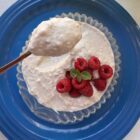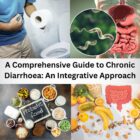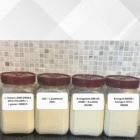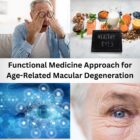Everything You Need to Know About Hypertension
Hypertension is known as a silent killer. Unfortunately, most people with this problem are not aware until symptoms appear. Uncontrolled hypertension increases the risk of several health problems, including stroke and heart attack. Hence it is essential to measure it regularly.
What is Hypertension
Hypertension is a common long-term condition. Here, blood pressure against your artery wall is high enough to cause other health problems like heart disease. Blood pressure is determined in two numbers.
Systolic: The first number results from the amount of blood your heart pumps.
Diastolic: The second number results from the amount of blood flow resistance in your arteries.
Blood pressure readings are taken in mm of Mercury mmHg.
Hypertension Types and Causes
Hypertension can be broadly classified into two types.
Essential (Primary) Hypertension: Most adults have this type. They do not show any identifiable cause. This type of high blood pressure tends to develop gradually over several years.
Secondary Hypertension: Some people develop hypertension due to some underlying condition. This type is called secondary hypertension. This kind of hypertension appears suddenly and causes higher blood pressure than primary hypertension. Some conditions and medications lead to secondary hypertension, such as
Kidney Disease.
Thyroid problems.
Obstructive sleep apnea.
Adrenal gland tumours.
Certain congenital disabilities in blood vessels.
Some kinds of medication such as cold remedies, birth control pills, decongestants, over-the-counter painkillers, and a few prescription drugs.
Illegal drugs like cocaine and amphetamines.

Hypertension Symptoms
People with hypertension may experience some of the following symptoms
- Headache
- Nosebleed
- Irregular heart rhythm
- Vision changes
- Buzzing in the ears
Severe hypertension can also show other symptoms such as
- Fatigue
- Nausea
- Vomiting
- Confusion
- Anxiety
- Chest pain
- Muscle tremors
Some people also experience other symptoms. However, these may not be related to hypertension like
- Sweating
- Dizziness
- Trouble sleeping
- Facial flushing

How to Prevent and Manage Hypertension Naturally.
To prevent and manage Hypertension, a person must follow certain Lifestyle Improvements and Dietary Modifications.
Diet and Nutrition
People must follow a proper diet to prevent and control Hypertension. Dash Diet is an easy way to stay on track.
DASH Diet
It is a healthy way to lower your blood pressure. DASH means Dietary Approaches to Stop Hypertension. The diet constitutes food rich in Potassium, Magnesium, and Calcium. These nutrients play a key role in controlling blood pressure. It also limits the intake of sodium, added sugars, and saturated fats. Studies show that DASH can lower Hypertension in two weeks.
What to Eat?
DASH diet flexibility and balanced eating plan that helps in creating a heart-healthy eating style of life. It is easy to follow this diet as most foods are found at your grocery store. This diet adds many vegetables, fruits, and whole grains. Low-fat or fat-free dairy products, beans, and nuts are also included. When you start DASH a diet, it is essential to choose foods that are
- Rich in calcium, Potassium, Magnesium, Protein, and Fiber.
- Low in sodium.
- Low in saturated fat.
Recommended Servings
DASH diet provides you with daily and weekly nutritional goals. However, your number of servings depends on your daily calorie needs. Here is a list of recommended servings from each food group.
Reduce Sodium
Lowering sodium intake is highly needed to reduce Hypertension. You can reduce sodium by
- Using sodium-free spices
- Use flavouring instead of salt
- Do not add salt while cooking rice pasta
- Choose plain and fresh vegetables
- Always read food labels and select low sodium or no salt added products
You may notice that the food tastes different once you start cutting back on processed high sodium food.
Dietary Supplements
Dietary supplements provide low-cost and low-toxic interventions, which help reduce blood pressure.

Nutrition
Flax Seeds
Flax seeds are one of the most common dietary supplements. It contains fiber lignans and short-chained Omega 3 fatty acids.
CoQ10
Coenzyme Q10 plays a crucial role in the electron transport chain as well as oxidative phosphorylation in the production of ATP. Low levels are associated with hypertension. Beta-blockers, propranolol, and statin drugs can reduce the endogenous production of CoQ10 by 40%. Supplements can help to reduce systolic blood pressure up to 17 mmHg and diastolic up to 10 mmHg without side effects.
Vitamin D
The role of vitamin D is not clear when it comes to heart health. But vitamin D deficiency may be linked to an increase in the risk of hypertension. Moreover, taking Vitamin D supplements can lower the risk.
Magnesium
Magnesium is strongly related to hypertension. Intake of magnesium can reduce systolic as well as diastolic blood pressure. However, supplements may cause loose bubble movement. So it is always suggested to start with low doses and slowly increase as tolerated.
Theobroma Cacao Cocoa
Studies show that taking Coca lowers cardiovascular mortality. Low doses of dark chocolate can decrease hypertension systolic BP by 2.9 and diastolic BP by 1.9. However, intake of white chocolate is not associated with changes in hypertension or plasma biomarkers.
Omega 3 Fatty Acids
Diet rich in Omega 3 fatty acid help to prevent and control hypertension. Moreover, deficiency can also contribute to the development of hypertension tested in animal models. In addition, it also happens to be true in humans. Studies show the relationship between hypertension and the long chain Omega 3 intake.
Fiber
Fiber can significantly reduce both systolic and diastolic. Studies show that 3.5 grams of psyllium powder intake 20 minutes before each meal can significantly reduce hypertension.
Inorganic Nitrates
Dash diet and Mediterranean diet contain food rich in inorganic nitrates. It is the source of nitric oxide, which is a vasodilator. Food such as carrots and beats, in addition to green vegetables, are rich in inorganic nitrates. Beetroot juice diet for four weeks showed a decrease in systolic and diastolic levels. However, the effect and dosage are currently unknown.
Olive Oil
Olive oil is one of the essential components of the Mediterranean diet. Moreover, it consists of high mono-saturated fatty acids and healthy polyphenols. Olive oil is a logical substitute for butter and other oils. Consuming a polyphenols-rich diet is essential to prevent and control hypertension.
Botanicals
Some botanicals have the potential to reduce hypertension. They are
Garlic
Garlic is known for its anti-hyperlipidaemic properties. However, studies show that it has a blood pressure lowering effect. A dosage of the half to two cloves per day is recommended.
Hawthorn
The herbal extract is called a cardiovascular tonic. It is popular in Europe. Clinical trials have shown that this has a mild effect on introducing hypertension.
Note:
Herbal treatment always requires close monitoring because herbs such as ephedra can raise blood pressure.
Life-Style Changes
To prevent and control Hypertension, we must inculcate some life-style changes such as
Exercise
Aerobic endurance exercises help to prevent, treat and control hypertension. Doctors have observed a reduction of approximately 5 to 7 mmHg systolic. Moreover, this reduction can last up to 22 hours following the endurance exercise. Frequency is preferably all days of the week with moderate intensity. Primary endurance physical activity greater than or equal to 30 minutes every day is suggested.
Weight Loss
Studies prove that weight loss can reduce hypertension. A loss of 4 kg can reduce approximately 6 mmHg.
Mind-Body Therapy
Mind-body therapy is a group of techniques that help to heal and enhance the mind’s interactions with bodily function. It helps to induce relaxation and improve health and wellbeing. It is essential to practice daily. Moreover, these practices are not only pleasant but also non-invasive.
How to Choose the Best Mind-Body Therapy?
Selecting therapy is not easy. So one must do some homework before making a choice. Ask yourself
- What are you expecting from the therapy?
- What is appealing?
- Which is logically realistic?
- What characteristics must you consider?
- What is safe as well as effective?
Creating a Successful Mind-Body Practice
Changing your habits, schedule, and mind would be best when trying a new health regime. These specific tips help to start and stick to a practice.
Understand what you want to change
Setting a realistic goal
Realize the challenges and plan for them
Creating measurable, specific action steps
Enlisting support
Track your progress and make necessary adjustments.
Some of the therapies are
Relaxation Response
The relaxation response is the opposite of our body’s stress response. It is a switch off to the tendency of fight or flight. During stress, relaxation-response can be induced with the help of breathing exercises and other mindfulness techniques. This help to calm your mind. Here we present some of the most effective techniques.
Meditation
Meditation can be considered a powerhouse of stress reliever. It works wonders in calming down the body and mind. Practice meditation daily and reduce the time your body needs in stress response.
Breathing Exercises
Breathing exercises have high efficiency in Calming down the mind and body. Different types of breathing exercises are available, of which diaphragmatic breathing is particularly beneficial.
Biofeedback
In biofeedback, patients get trained to observe shifts in bodily functions using electronic monitors. They learn to adapt and modify emotional and mental responses to prevent and control hypertension.
Tai Chi
Tai Chi is based on Chinese traditional medicine and philosophy. It involves movement therapy that seeks to harmonize both Yin and Yang forces. It also helps to improve posture moment control.
Qigong
It combines body movements, meditation, muscle relaxation, and breathing. It helps to improve physical, emotional, and mental health.
Yoga
Yoga is an ancient practice that utilizes breathing exercises and movement with specific posters. Studies show that yoga can reduce hypertension symptoms such as fatigue, sleeplessness, and stress and improve quality of life.
Mindfulness-Based Stress Reduction
Mindfulness is the art of transforming how we relate events and experiences. Though mindfulness is not a cure, it helps to address the body’s response to stress. Evidence shows that mindfulness can reduce hypertension.
Other Therapies
Earthing
It has the potential benefit of enhancing overall health, including blood pressure, and getting direct physical contact with the earth, like walking barefoot on a grass beach. We can also achieve indirect contact using the grounded blanket.
Ayurveda
Practitioners use specific diet Lifestyle changes, herbs, breathing techniques, and yoga to balance doshas. One must also avoid food rich disturbing the balance.
WAVE Protocol
WAVE protocol is a quick nutrition guide. The main objectives of the tool are
- Providing a tool that can help to assess weight, physical activity, and eating habits.
- Presenting a four-letter acronym that is easy to use.
- Identifying weight, nutrition, and activity issues that are to be addressed.
- Reinforcing physical activity and nutrition importance to promote health and prevent diseases.
WAVE has become an acronym for health care providers during the routine visits
W=Weight
A=Activity
V=Variety
E=Excess
One can choose to discuss the issues in any order. This entire protocol would take approximately 5 to 10 minutes.

Conclusion:
Hypertension is a severe medical condition that increases the risk of heart, brain, kidney, and other diseases. It is the primary cause of premature death worldwide. Hypertension is predominantly known as a silent killer. Fortunately, hypertension can be prevented or managed by following diet and Lifestyle changes. WAVE protocol helps to track diet and activity. DASH diet helps to reduce hypertension effectively. Regular physical activity is vital to lowering hypertension. It has been proved that mind-body exercises are beneficial and help to improve satisfaction and happiness.
References:
https://www.ncbi.nlm.nih.gov/pmc/articles/PMC5733954/
https://www.who.int/news-room/fact-sheets/detail/hypertension
https://www.cdc.gov/healthyweight/physical_activity/index.html









